What Is The Perfect Steak Temperature
Apr 17, 2023, Updated Oct 24, 2024
This post may contain affiliate links. Read more at our disclosure policy.
Steak is a popular dish that many people enjoy, whether for a special occasion or a casual dinner. One of the key elements to cooking the perfect steak is getting the temperature just right. Find out how to get the Perfect Steak Temperature every time!
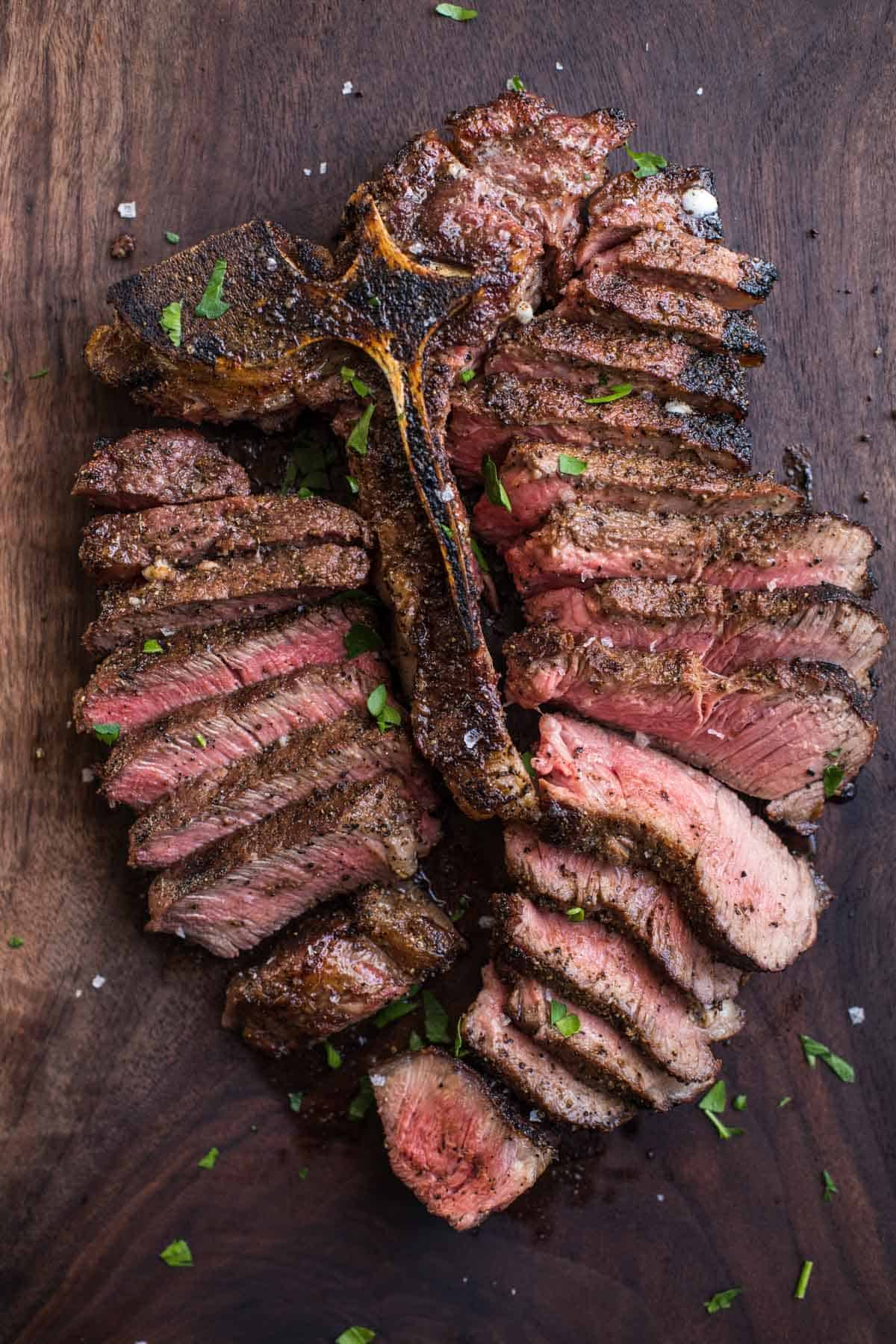
Table of Contents
Cooking steak to the proper temperature not only ensures it’s safe to eat, but it also affects the texture and flavor of the meat. In this guide, we’ll explore the perfect steak temperature and how to achieve it.
And if you search the web and other resources you’ll find that there is no central guide or organization that defines the temperature level of steak. Often it’s left to personal interpretation or “chef’s temp” or “doneness”. Why is this?
Why Temperature Matters
When cooking steak, temperature is crucial because it determines the doneness of the meat. Overcooking or undercooking can result in a tough, dry, or flavorless steak. The temperature also affects the safety of the meat. Undercooked steak can harbor harmful bacteria, while overcooked steak can become dry and tough to eat.
And when you take the time to purchase good quality meat with the best marbling you can afford, you don’t want to overcook it.
The definition of “doneness” according to Merriam-Webster is the “condition of being cooked to the desired degree.” Not to be confused with “food safety”. So if you are here to preach that a steak cooked to 120 isn’t “done” you are technically wrong.
Steak Temperature Guide
The perfect steak temperature varies depending on the cut and personal preference. Here’s an internal temperature guide we follow for cooking steak (versus a low and slow cut like brisket or chuck roast):
- Black and Blue: Under 120°F (under 49°C)
- Rare: 120-130°F (49-54°C) – Rare steak is cooked on the outside but still red on the inside. The meat will be tender and juicy, but it can be more difficult to chew due to its raw center.
- Medium Rare: 130-135°F (54-57°C) – Medium-rare steak has a warm, red center and a slightly firmer texture.
- Medium: 135-145°F (57-63°C) – Medium steak has a warm, pink center and a firmer texture than medium-rare.
- Medium Well: 145-155°F (63-68°C) – Medium-well steak has a slightly pink center but is mostly cooked through. Not recommended.
- Well Done: 155°F and above (68°C+) – Well-done steak is cooked all the way through and has no pink or red color. Not recommended.
*Note that the United States Department of Agriculture (USDA) recommends that all steaks be cooked to an internal temperature of 145°F in order to kill any potential harmful pathogens. But in reality when you cook the outside of the steak at high temperatures it will kill most any pathogens and bacteria.
If you have any doubt about the meat sourcing, or are cooking ground beef, then we recommend following the USDA food safety guidelines.
How to Check Steak Temperature
There are a few methods for checking steak temperature for the casual cook:
- Instant-read thermometer: This is the most accurate way to check steak temperature. Insert the instant read thermometer into the thickest part of the steak to get a reading. Be careful not to touch the bone or pan, as this can affect the reading.
- Time: Cooking time can also give you a general idea of steak temperature. However, this method is less reliable as it depends on the thickness of the steak and the heat of the grill or pan. As a rough guide, a 1-inch thick steak will take around 4-5 minutes per side for medium-rare. But we still recommend you have an instant read thermometer.
- Touch Test: This method is less accurate and not recommended but can be useful if you don’t have a thermometer. Press the center of the steak with your finger to test the doneness. A rare steak will feel soft and squishy, while a medium-rare steak will feel slightly firmer. A medium steak will feel firm, and a well-done steak will feel very firm. Again, we do not recommend this because so many variables can impact the tenderness of a steak regardless of the internal temperature. We recommend buying a good instant read meat thermometer.
Dial Thermometers: Not much has changed in the design and functionality of dial thermometers. Dial thermometers take too long to adequately take the temperature of any steak and are not accurate. Especially if grilling. So ditch it for a good instant read thermometer that will share the correct temperature in seconds (or less).
Best Tools To Measure Steak Temperature
Our favorite instant read thermometers to measure the proper steak temp is the Thermoworks Thermapen One ($109 USD) and the Thermoworks Thermopop ($35 USD). They read temperature accurately and are the best instant read thermometers in their respective price classes in the world.
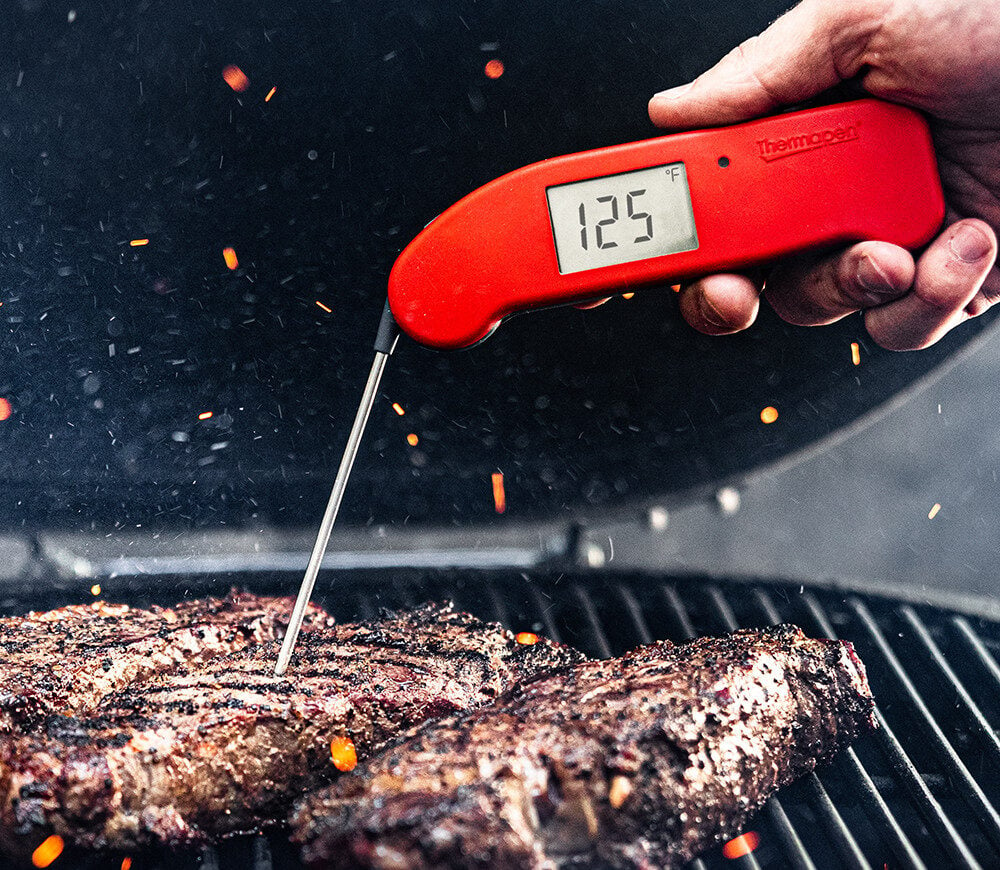
You can also find other options on Amazon but we have been using the Thermoworks products for over 10 years and they are the best in the industry. So much so that America’s Test Kitchen has rated their products the best buys in their respective classes.
Well Done Steak – Myth
We often hear at catering events that people want well done steak because they feel it’s a food safety issue.
This is not the case as noted above. While we respect personal preference, well done steak is not recommended because any tenderness that the intramuscular fat offers for flavor is rendered out leaving the steak dry and tough.
We do not recommend cooking good quality steaks any higher than medium temperature to maintain the integrity of the flavor and tenderness.
Red Steak: It’s Not Blood, It’s Myoglobin
We also hear from people that they don’t like “bloody” steaks and thus prefer medium well or well done steaks. The red liquid that you see on rare and medium rare steaks is not blood.
It’s a mix of water and myoglobin (simply put, a protein). As the steak temperature increases the myoglobin denatures (or changes state). A rare or medium rare steak still has some color to it because you have not completely changed the state of the myoglobin.
If cooking steak to medium well or above then the myoglobin has completely changed its state, the water has evaporated from the cells, and the texture of the steak becomes tougher. That is why to truly enjoy texture and flavor we recommend cooking steak to no more than medium rare.
Tips for Grilling the Perfect Steak at High Temperatures
- Start with a good quality cut of steak. Look for marbling for more flavor and texture and if you have a leaner steak like filet mignon, know that it will cook much faster.
- Preheat your grill or pan to high heat before cooking. Don’t bother letting the steak coming to room temperature. It’s a myth.
- Season the steak with salt and pepper before cooking. You can also add other seasonings like garlic or herbs like our beef seasoning.
- Use a meat thermometer to check the temperature and avoid cutting into the steak while cooking. The probes will not cause any loss of tenderness or “lose the juices”.
- Let the steak rest for a few minutes before serving. This will allow carry over cooking to occur and then the juices to redistribute as the cells begin to cool, making the steak more tender and flavorful.
- Thin steaks should be cooked at a very high heat. You can read more in our guide on how to grill thin steaks.
Getting the perfect grilled steak temperature or any method is essential to cooking a delicious and safe meal. By using a meat thermometer and following these tips, you’ll be able to cook the perfect steak every time, whether you prefer rare or well-done.
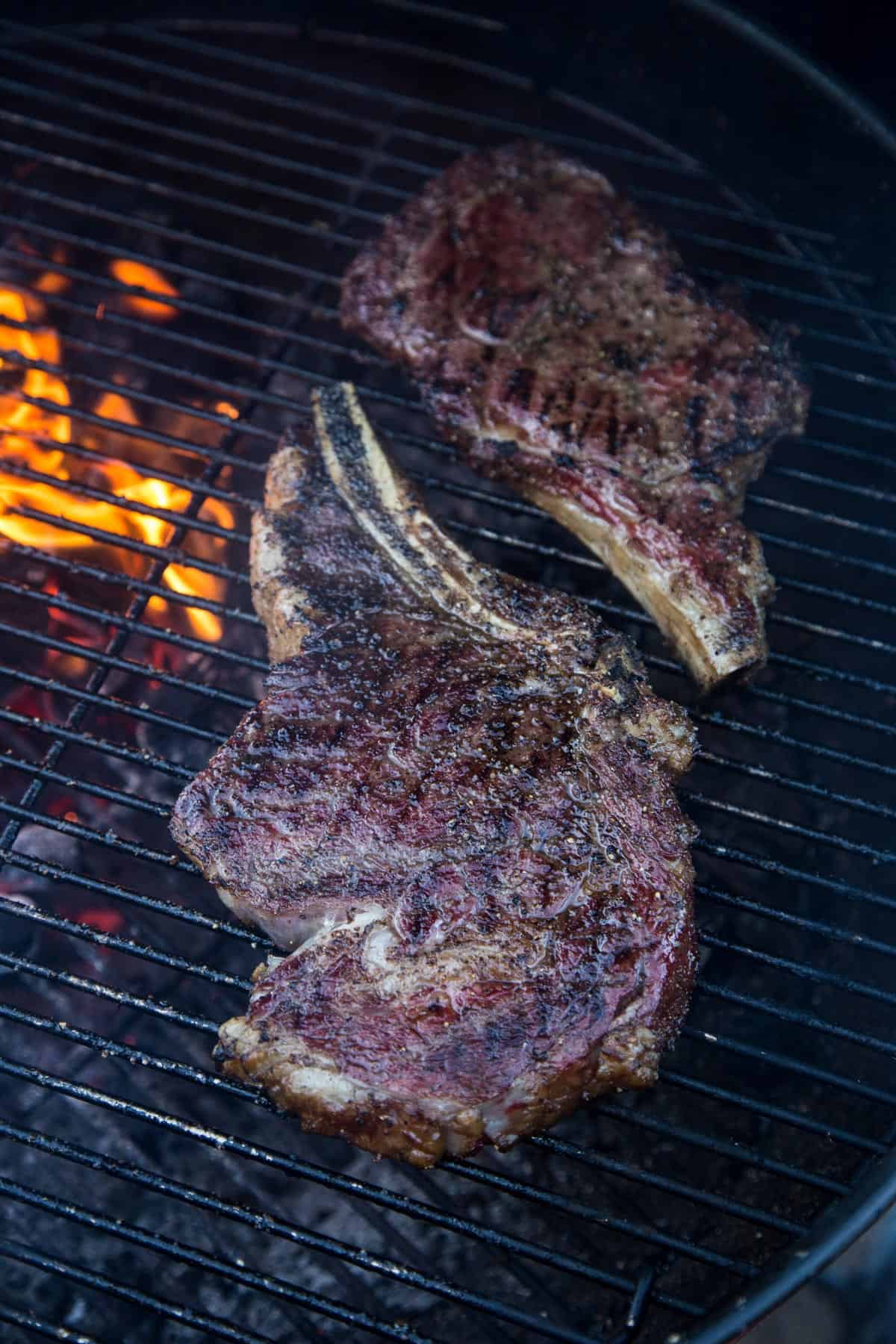
Would you like to save this?
Prime versus Choice – What’s the best quality of meat?
Ground Beef
While this guide on steak temperature is focused on whole cuts or roasts, ground beef is slightly different. Once beef has been ground then any bacteria that was outside on the cut will get into the meat.
It’s recommended to cook any ground beef to 160°F, including any hamburgers, meatballs, or meatloaf recipes.
Carryover Cooking
In our recipes we often point out the thermo-dynamic of “carryover cooking“.
As meat cooks, the heat source will increase the temperature of meat starting from the outside of the meat and work its way into the cooler portion, or thicker part, of the steak.
This means that if you cook a steak to an internal temperature of 130 degrees the outer edges will likely be closer to 150 degrees. If you remove the steak from the heat source the warmer outer heat will continue to travel and warm up the interior on average 3 to 5 degrees.
As your cuts of steak get larger the carry over rate can be much higher. So in a Smoked Prime Rib as an example the temperature change can be anywhere from 5 to 7 degrees or more (especially if you keep it covered or in a cooler to stay warm).
Be sure when you are cooking your steaks that you account for carry over cooking.
Frequently Asked Questions (FAQ)
The cooking time will vary depending on the thickness and desired level of doneness. A general rule of thumb is to cook a 1-inch thick steak for 3-4 minutes per side for medium-rare, 4-5 minutes per side for medium, assuming your cooking temperature is 450 degrees F. But always use the internal temperature as the final guide for when steak is done.
Pat your steak dry with a paper towel before cooking and make sure your pan or grill is hot. Make sure the steak is lightly oiled and already seasoned. Place the steak over the direct heat source for 2 – 3 minutes to get it seared properly and repeat for the other side. For thicker steaks you can also do the same for the edges.
No. It’s a myth that steak coming to room temperature will speed up the cooking process. It’s more likely you’ll see harmful bacteria form when you leave meat out in the open. The internal portion of the steak will still be under 45 degrees even after an hour. So just be sure you fire is hot, and the steak is lightly oiled and seasoned. Then apply to the heat source.
Yes. Steak is also safe if the internal temperature is cooked lower than that if the outer portion of the steak is cooked beyond 145 degrees F. This is why a rare steak is as safe to eat.
Yes. We prefer our steak cooked between 125 and 130 degrees F and is perfectly safe to eat if the outside edges were seared.
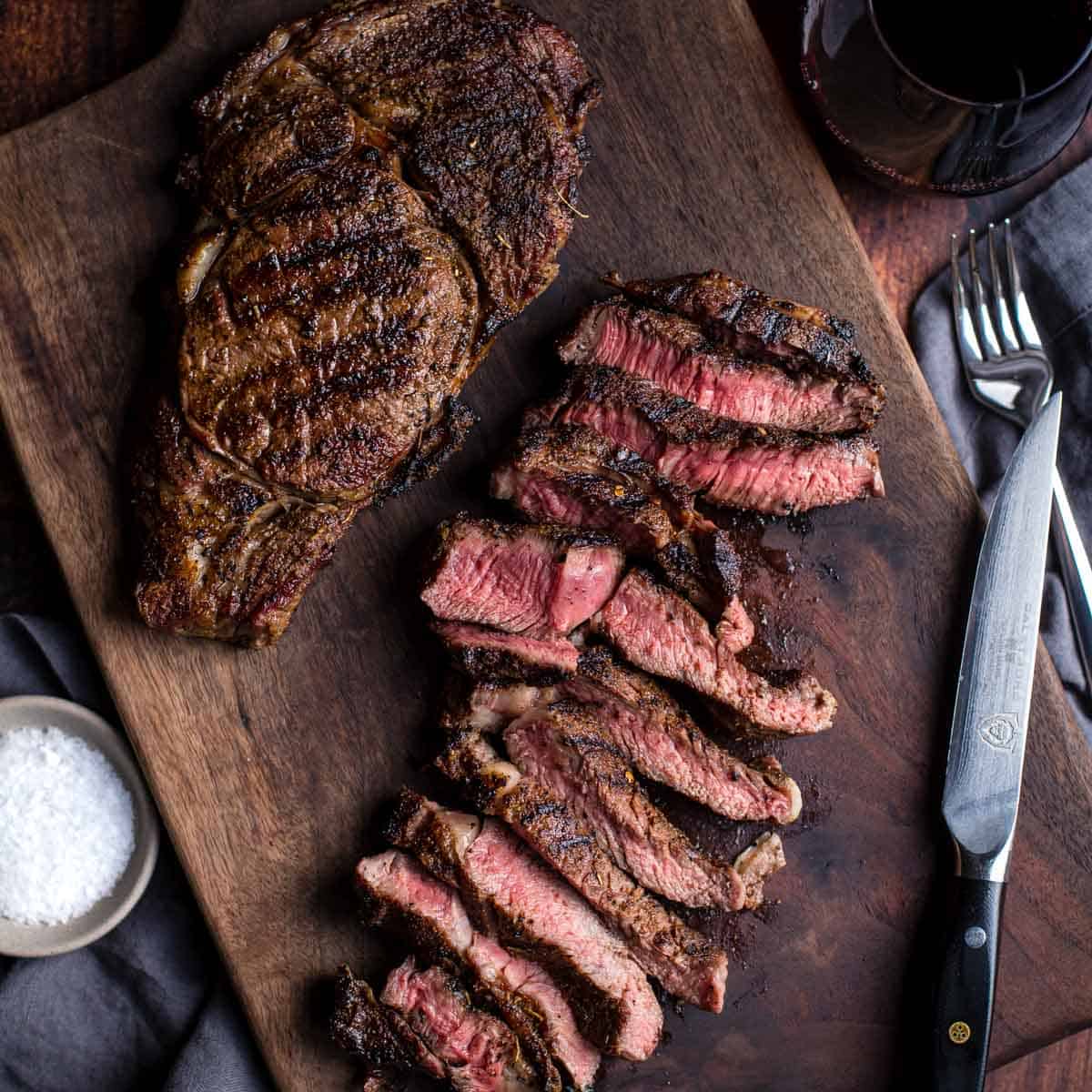
Steak Recipes
Try out this newfound information in some of our favorite steak recipes as well as our guide on how to grill steak.
- Reverse Seared Porterhouse – Smoked and then seared to the perfect temperature. Works as well on a Grilled T-Bone as well.
- Grilled Fillet Mignon – Lean and delicious finished with bacon and blue cheese.
- Grilled Flat Iron Steak – An incredibly tender cut from the chuck roast (beef shoulder). Cooked hot and fast.
Roast Recipes
Use the same thermodynamics the next time you cook up an incredible beef roast.
- Grilled Prime Rib – A large rib roast grilled and finished with a flavorful compound butter.
- Grilled Beef Tenderloin – Decadent tenderloin finished with a beautiful mustard glaze.
- Grilled Tri Tip – Tri tip grilled to perfection with a Zinfandel wine reduction sauce.
Tried this recipe? Give us a star rating and we would love to see! Mention @vindulge or use the hashtag #vindulge on all the social media handles. And consider subscribing to our newsletter where we drop all our favorite ideas and inspirations every week.
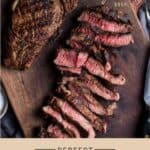
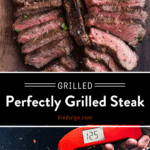
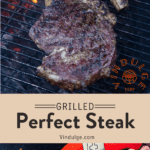


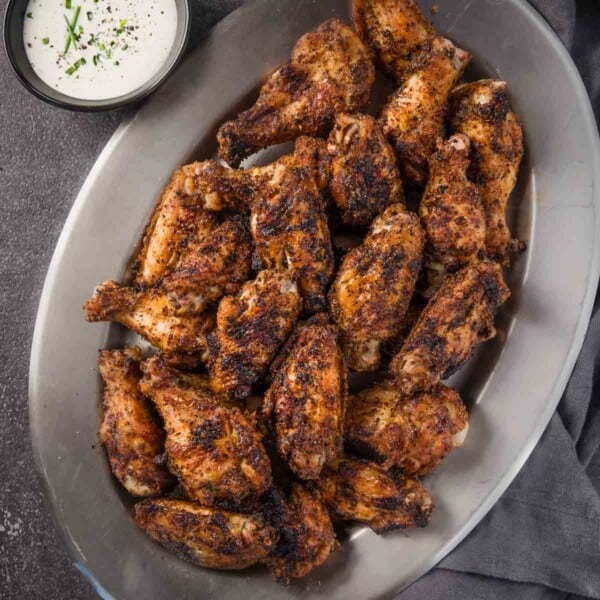
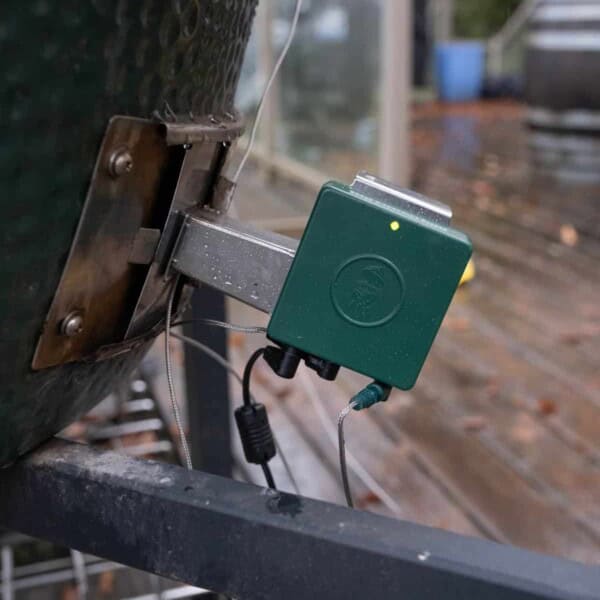
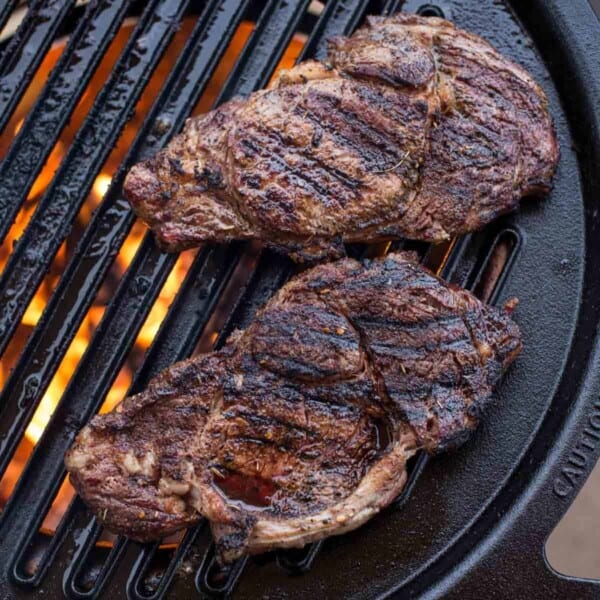
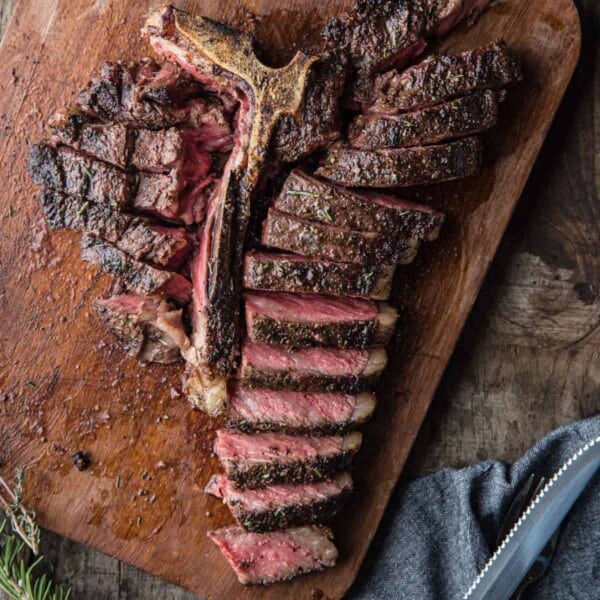
















Great post. Very informative. Thanks!